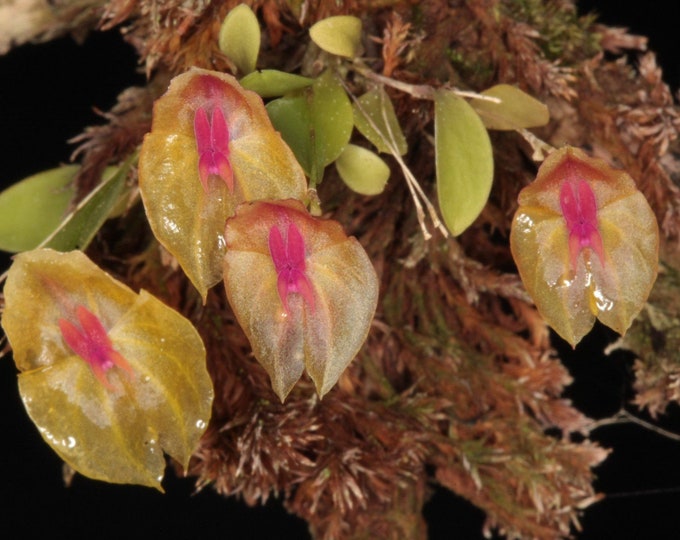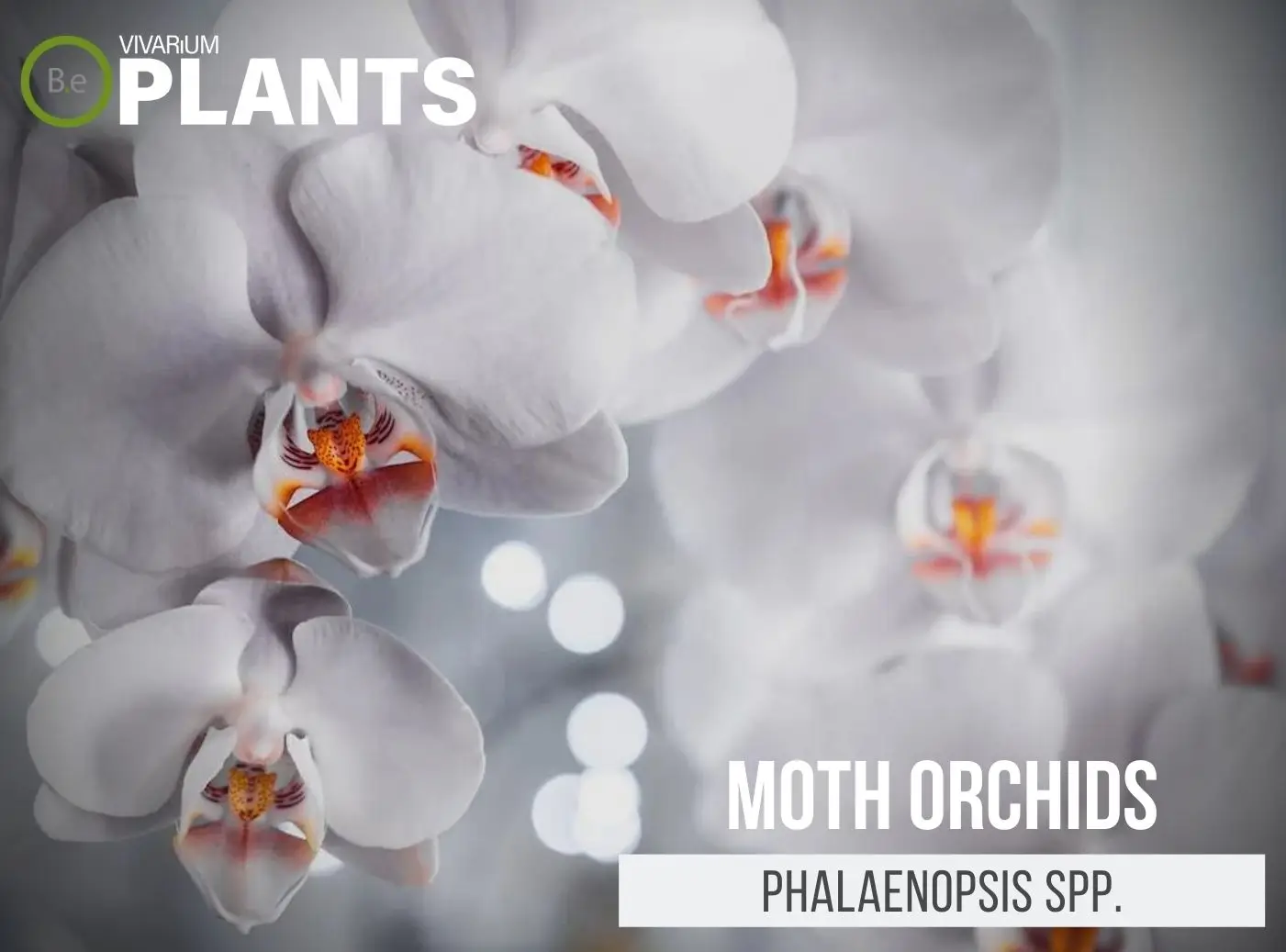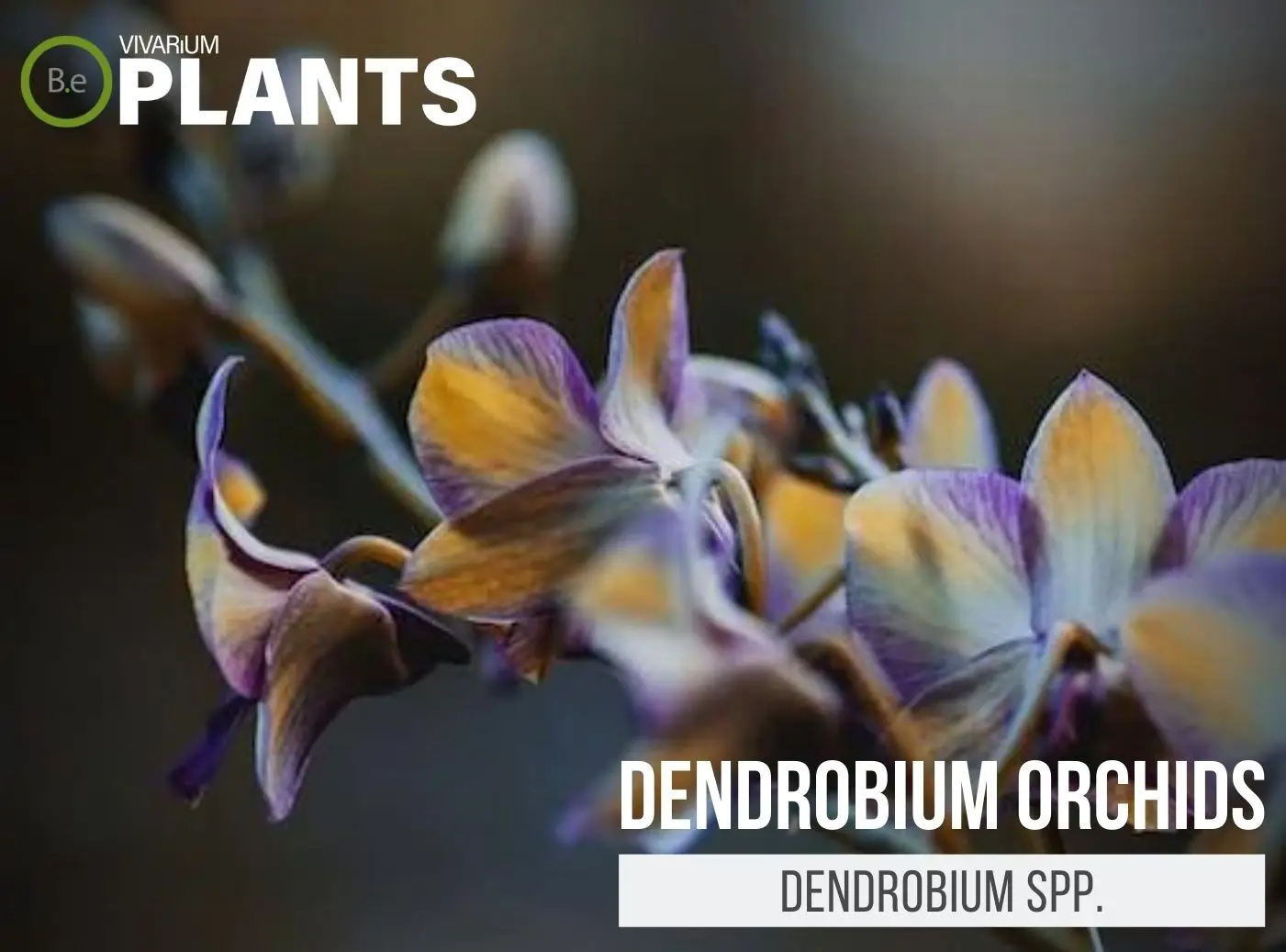Oncidium spp., commonly called Dancing Lady Orchids, is a unique and beautiful type of orchid that brings a special kind of beauty to any room or terrarium.
These colorful and hardy plants are a favorite of vivarium enthusiasts and make a wonderful addition to any collection.
Whether you are just getting started with terrariums or are an experienced orchid lover, you will be sure to love these orchids!
In this article, we will explore the features and care requirements of the Dancing Lady Orchid, as well as provide some tips and tricks to keep them looking their best. So, let‘s get started!
Table Of Contents:
ToggleWhat Are Dancing Lady Orchids?
The Oncidium genus contains an array of epiphytic orchids characterized by their exquisitely unique form and colorful petals.
The Dancing Lady Orchid tends to grow as an epiphyte, so attaching the root structure of this type of orchid to moss or tree bark is a great way to contribute to its growth and continue to ease care.
Generally, Oncidium reproduces in racemes and its motley-shaped petals emit a pleasant floral scent when blooming.


Dancing Lady Orchids Facts
The Oncidium orchid is often nicknamed the “Dancing Lady” because the way the flowers flutter together in the wind resembles a dancing woman.
It is also known as the “Golden Shower Orchid” due to the fact that the flowers actually resemble a shower of golden rain.
Therefore, it is a popular species with orchid enthusiasts.
Description
The Dancing Lady Orchid has many characteristics that make it stand out in the vivarium.
The leaves are long and slender, green in color, and can reach a length of about thirty centimeters.
Its leaves are very thin and delicate and have visible veins running through them.
The leaves of this orchid can sometimes exhibit beautiful yellow and purplish hues as well.
The flowers of this species are incredibly showy and definitely the highlight.
The flower petals are multi-colored, with most being of the yellow, yellow-orange, and pinkish variety.
These flowers can sometimes reach a staggering size of up to four inches in diameter.
In peak bloom, multiple flowers can sprout at the same time, giving your enclosure a vibrant and attractive pop of color.
Habitat
The Dancing Lady Orchid is native to tropical Americas and the Caribbean Islands. It is mostly found on trees, logs, and mossy rocks.
In its native habitat, the temperature usually ranges from 60°F to 70°F, and the humidity needs to be high.
pH Preference
Old lady orchids prefer slightly acidic soil that is within the pH range of 6.0 to 7.0.
Maintaining a slightly acidic soil will help ensure optimal growth, flowering, and overall health of the orchid.
Vivarium Type
The Dancing Lady Orchid is well suited for terrariums, paludariums, and other closed environments.
They are especially well–suited for terrariums that are kept at higher humidity, as this helps keep the orchid healthy and vibrant.
Finally, Dancing Lady Orchids can also be grown in open–air environments, such as hanging baskets, that are kept out of direct sunlight and misted regularly.
Vivarium Placement
In the vivarium, this orchid should be placed near a light source in an area with suitable humidity and temperature.
The substrate should be well-draining, with some type of support to help the orchid cling to its substrate.
You may also secure it with moss, which also helps with moisture retention.
The taller plants can be used to provide shade while lower-growing plants can help bring the humidity up in the area.
Substrate
Since this orchid is an epiphyte, it does not require soil or potting mix to grow. You may use clay pebbles, bark, peat moss, or terrarium gravel as the substrate.
It is important that the substrate is well-draining, as this orchid does not enjoy having its roots sitting in water.
The substrate should provide enough support, but not too much so that the orchid may cling to it.
Lighting
This orchid should not be placed directly beneath the sun, as strong sunlight could cause burns to delicate leaves and flowers.
The best terrarium lighting situation for this orchid is bright and indirect, such as provided by a window or fluorescent lighting bulb.
Ensure that you provide the orchid with enough light for it to bloom, but not too much light that it gets damaged.
Buy Dancing Lady Orchids
When shopping for orchids, expect a few key indicators you are buying the best quality plant. The plant should be pest free.
The source of the orchid will more than likely not be in bloom so don’t worry if it arrives without flowers.
Click the image below to find out more about the current price and other relative info:
Dancing Lady Orchids Care and Propagation
The Dancing Lady Orchid is relatively easy to propagate and care for in the vivarium.
It is possible to propagate these orchids through seeds, but this is a more complicated process and not recommended for beginner hobbyists.
The primary method of propagation is through vegetative means, such as taking cuttings and/or dividing the plant.
How to grow
The Dancing Lady Orchid should be placed in a spot in the vivarium where it can receive bright, indirect light on a daily basis, and with temperatures ranging between 60 and 70 degrees Fahrenheit, preferably with high humidity.
The humidity should be kept constant, as this orchid is a tropical species and enjoys high humidity.
If you can, it’s best if you provide some type of water mister or fogger to help keep the area around this plant consistently damp.
Watering
The Dancing Lady Orchid does not enjoy having its roots saturated in water and should not be submerged in any water.
Instead, it would be best to water the plant with a water mister or gentle shower, making sure the leaves and flowers get soaked.
Watering should be done at least once a week, depending on the humidity and temperature.
Plants Similar To Dancing Lady
Adding diversity to an enclosure is key to an aesthetically pleasing enclosure.
Try mixing up the look of your terrarium with different flora that can easily co-exist in the same types of environment.
Furthermore, if for some reason you find this orchid hard to acquire or would like to consider something similar to this terrarium plant…
Here are some other plants you might find may do well with or in the place of Oncidium spp.:
Conclusion
The Dancing Lady Orchid is an incredibly beautiful and unique species of orchid that is perfect for beginner orchid growers.
It is easy to care for and doesn’t require much attention.
With the right amount of light, humidity, and temperature, this orchid will bloom and bring life to any vivarium.
Frequently Asked Questions
1. Water the orchid regularly, allowing it to completely dry out between waterings.
2. Place the orchid in a bright, indirect sunlight spot and avoid direct sunlight exposure which can cause sunburns.
3. Maintain an even temperature around the orchid and avoid exposure to drafts.
4. Fertilize the orchid monthly with a balanced liquid fertilizer diluted to 1/4 strength. (BONUS)
5. Repot the orchid with fresh orchid soil every two to three years.
Dancing Lady orchids typically flower once or twice a year.
Yes, Dancing Lady (Oncidium spp.) is an indoor plant. It is a small, air–purifying species that is perfect for bright, indirect light and does not require direct sunlight.
There are several possible reasons why an Oncidium orchid may not be flowering. These include inadequate lighting, improper temperature, too much or too little water, and nutrient deficiencies. Additionally, it is also possible that the orchid is not mature enough to flower.
Yes, Oncidiums prefer to have the soil dry out between waterings.






